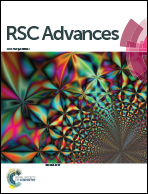Emission properties of dye-doped cationic nanoparticles: size, surfactant and monomeric composition effects
Abstract
Cationic nanoparticles (NPs) demonstrate advantages over similar anionic systems in relevant applications such as nanocarriers and biomarkers. To harness their unique properties and full potential in bioimaging, a clear understanding of the factors controlling the emission performance of dye-doped cationic NPs, especially under drastic pumping conditions such as those involved in high-resolution microscopy, is required. Herein, we present, for the first time, a comprehensive analysis of the photophysical and laser properties of Rhodamine 6G (Rh6G) doped cationic NPs in colloidal suspensions and self-assembled monoliths. Composition and morphological parameters such as dye content, weigh proportion of NPs in the solution, NPs size, dielectric constant of the surrounding medium, monomeric composition, and surfactant structure, have been mapped. The fluorescence capacity of Rh6G is mainly ruled by the size of the NP, as well as by its monomer and surfactant composition. The laser properties are more sensitive to compositional changes, since laser efficiencies ranging from 50% to 0% (no lasing) are measured. Hence, a most careful selection of monomers and surfactants must be carried out in order to boost their emission and photonic properties.


 Please wait while we load your content...
Please wait while we load your content...